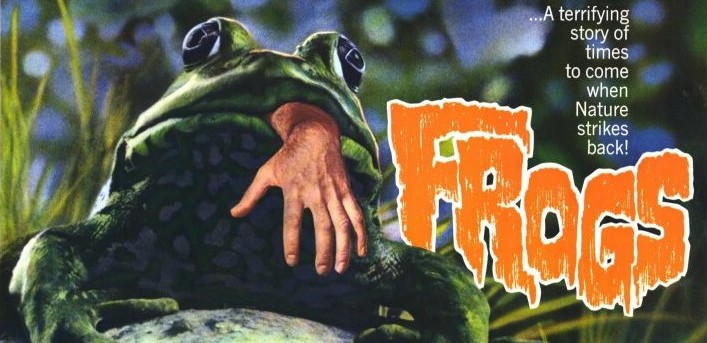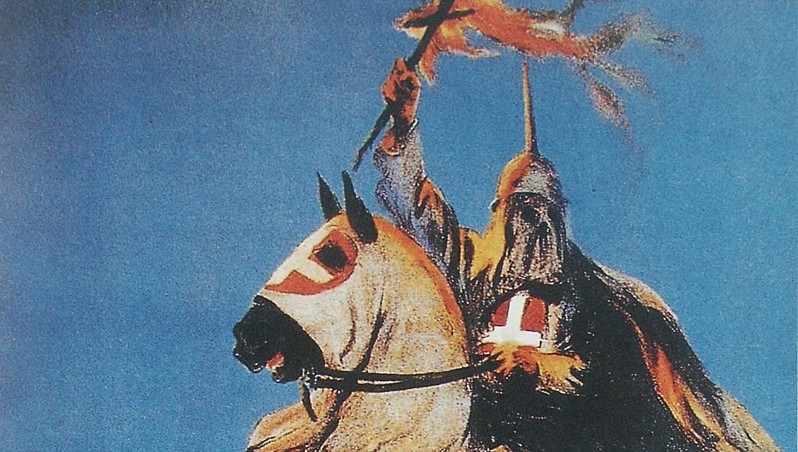





Movie Trailer Assignment
I love movie trailers.
An awful movie trailer is something we remember because it’s just that: Awful. Maybe it was boring. Maybe it gave away the ending of the movie. Who knows? We just remember how awful it is, or forget it immediately.
A great movie trailer is memorable, not merely as an advertisement, but something that can stand on its own, even after watching the film that is being previewed. It truly is an art.
I try to incorporate what I love into class when I can, and the movie trailer seemed like a perfect opportunity. As part of broadcast journalism, students must create compelling, competent stories that encapsulate hours worth of interviews, footage and research in about a minute and a half. Plus, I needed them to get practice using Final Cut Express, so much so that they’re not thinking about editing at all–only content.
So the idea was simple: Have students watch a movie and edit it down into a trailer that is 2-2:30 minutes long.
When I initially came up with this idea, I had wonderful visions of wildly creative trailers where students could use their imaginations and create something amazing. Just like some genius did by re-imagining The Shining:
Unfortunately, the reality of technology makes this difficult. One of my friends taught a class on the movie trailer and had students edit together whatever trailer they wanted. Unfortunately, this meant that he had to upload about 20 different movies so that the students would have the raw footage to edit. If you consider it takes about 2-4 hours to convert movies to the proper format, and then another 1-2 hours to render the footage in Final Cut so you don’t have to re-convert it every time you open up the movie…well, that means anywhere from 60 to 100 hours of time just getting the movies in the proper format. Ugh.
So, I decided to limit things a bit so students could just select from a few films.
The key was that they still got to be creative which, in early journalism classes, can be tough. Hell, anyone can have students exercise their creativity in “Feature Writing” or “Opinion Writing.”
So, as I was saying, for this assignment students had to create a movie trailer. It had to be one of these three films: Planet of Dinosaurs, Kingdom of the Spiders, or Frogs.
Why these three movies?
1) Planet of Dinosaurs does not have a trailer, and, as you can see, the existing trailers for Kingdom of the Spiders and Frogs are not very good.
2) These three are all available to view for free on YouTube, which means I don’t have to share one library copy or waste time watching three different films in class. Fortunately, thanks to the magic of the Information Superhighway, these are not like your typical YouTube films where they’re diced up into 10-minute increments (Millenials don’t have time for that!), but rather the complete films:
3) I didn’t want any students to be at a disadvantage. Let’s say I assigned students to create a movie out of The Shawshank Redemption. Maybe some students have never seen it (for shame), but for others it might be their favorite film of all time. That really wouldn’t be fair to students who haven’t watched it (or have only watched it once). This way, all the students start out on equal ground: They’ve never seen any of these films.
So I assigned this project and, a couple of weeks later, I had a dropbox filled with movie files.
These were my student trailers that really stood out. Even when there were some imperfections, I could still tell what the students were going for.
This first trailer is for Planet of Dinosaurs and it’s pretty straightforward, but he does a great job using the movie’s dialogue with music from a few different movies:
This next trailer is from the movie Frogs, which is a 1970s movie about man v. nature where nature fights back! Again, an overall solid piece where she incorporates great scenes from the movie with a good use of dialogue. The music is a bit familiar, but I think it works:
This next one was inspired by the fantastic Watchmen trailer. This is another trailer for Kingdom of the Spiders, this time with music. I appreciated the creativity. As you can see, the music fits and, at times, synchs up perfectly:
And this last one is also a Kingdom of the Spiders trailer (they just couldn’t get enough of the Shat!). He used the eerie music from the excellent, wildly depressing Requiem for a Dream. I wish the editing would have gotten crazier and more frantic as the music took off, but I love what he was going for here and thought the trailer was excellent:
The assignment served its purpose. I’ll be honest–the students weren’t thrilled about watching the actual movies (I’ll have to teach them to appreciate movies ironically), but they had a good time editing down the movies, exercised some creativity, and are completely comfortable with the editing software. I’m considering it a mission accomplished!

Racist? So What?
I think I might start putting up an occasional entry about my graduate class. This semester, for the first time, I’m teaching the course “Race and Media” and it’s actually going really well. I keep waiting for the conversation to die down, but each night it seems that there are more and more questions and issues thrown around in the discussion.
I had a class on race and media at the University of Iowa. It was taught by Tim Havens, who did a great job keeping a discussion going without going the traditional discussion leader route. That said, I also had a race class taught by the irreplaceable, essential Mary Campbell. I’ve tried to combine the two approaches, while adding in a number of readings I’ve picked up over the years and, like I said, so far it’s going really well.
This week, one of the readings came from Eduardo Bonilla-Silva’s book Racism Without Racists, and this particular excerpt really stood out to me. In this chapter, Bonilla-Silva is examining the oft-cited phenomenon of people declaring tolerance, but harboring beliefs that suggest otherwise (in other words, “I’m not a racist, but…”). I talked about it with my race class and I think the discussion went well, but I just can’t stop thinking about it:
“First, readers need to be reminded that I see racism as a problem of power. Therefore, the intentions of individual actors are largely irrelevant to the explanation of social outcomes. Second, based on my structural definition of “racism,” it should also be clear that I conceive racial analysis as “beyond good and evil.” The analysis of people’s racial accounts is not akin to an analysis of people’s character or morality.”
This could easily represent a fundamental disconnect between academia and the “real world”–if I call you a racist, you’d probably get offended. However, I think the distinction is an important one.
If I know that a certain stereotype exists (e.g., “White people like sour patch kids”), that doesn’t mean I believe it. Hell, I can understand the wonderful complexity that is Santa Claus, but I don’t think he’s climbing down our non-existent chimney anytime soon. In other words, my ability to recognize that stereotype doesn’t mean I’m going to buy random White people delicious sour patch kids.
That said, can you really separate recognition and belief when it comes to race? When Bonilla-Silva writes that analysis of racial accounts is not akin to an analysis of people’s character or morality, I have to question that, at least on some level.
This was further complicated by, of all things, an episode of House. No, this isn’t a diatribe against the steep decline of a once-great show (though after a weekend of watching episodes from a few seasons ago, I could write volumes on the subject. I’ll let the A.V. Club handle it). I was watching a rerun on USA and the patient-of-the-week was a woman who had turned into a functioning psychopath. They were quick to point out that not all psychopaths or sociopaths are killers, but I couldn’t help but wonder why not. I mean, the symptoms are all there–aren’t they just waiting for opportunity?
Yes, I understand the compartmentalization of these kind of issues, and I get that there is a difference between understanding stereotypes and internalizing them. But if you understand stereotypes, haven’t you already internalized them, at least to a certain extent? If I’m at the store and I’m supposed to buy a snack for some White person and I don’t know what they like, if the first thing that pops into my mind is sour patch kids, doesn’t that make it an issue? Of course I would shrug it off and dismiss it as a stereotype, it feels like the damage is done. There are a number of fascinating studies (with fascinating methodologies) showing that people tend to respond faster in an emergency if the victim is of the same race. If my schema instantly connects White people and sour patch kids, in an emergency, doesn’t that make me a racist? And shouldn’t there be some sort of consequence for feeling that way?
I realize there are more questions here than answers, but I’m fascinated by the discussion, and I hope I can find an answer (or what might help explain this anyway) by the end of the semester.